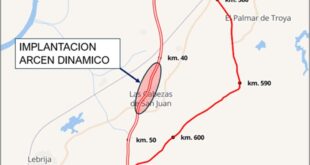A typical roadside speed camera in Spain — the DGT is rolling out 32 new devices this summer, including 25 average-speed sections and 7 fixed units across 11 regions.
Credit : Pablo Prat Shutterstock
Spain’s summer holiday has a brand new co-pilot. 32 speed cameras have been installed in 11 regions.
In addition to the 7 fixed cameras, there are 25 average-speed (sections) cameras. The total number of cameras in 2025 will be 122. The first month will be a honeymoon phase: only warnings are issued (if you go over the limit, you’ll receive a letter in the mail). Then, as usual, you’ll receive fines and penalties.
When warnings end – and fines begin
The Traffic Directorate (DGT) says the push targets the classic July–August spike in crashes linked to inappropriate speed. You will see two main types in action.
- The average-speed camera (tramo), which measures your speed between two gantries, and then fines you if you exceed the posted limit.
- Fixed cameras: A single photo at a specific point.
If you exceed the speed limit during the first month, only an informational letter will be sent. After the grace period, standard penalties apply (typically €100–€600 depending on excess speed, with points for serious breaches). Warning: Section cameras can be ruthless, especially on busy roads and long descents where a few km/h feels harmless.
New DGT Speed Cams: Map and Stretch-by-Stretch Locations
Average-speed (section) cameras
- Cáceres – EX-109: PK 54+420 D → 54+290 D
- Badajoz – EX-110: PK 36+795 D → 35+226 D
- Badajoz – EX-327: PK 21+940 C → 23+600 C
- Burgos – N-120: PK 74+620 D → 76+850 D
- Burgos – N-120: PK 76+850 D → 74+620 D
- Asturias – AS-117: PK 4+550 C → 6+600 C
- Cantabria – A-8: PK 146+440 D → 144+425 D
- Cantabria – A-8: PK 140+575 C → 146+980 C
- Pontevedra – N-550: PK 129+100 D → 126+930 D
- Pontevedra – AP-9: PK 155+220 C → 158+980 C
- Illes Balears – Ma-6014: PK 2+490 D → 1+275 C
- Sevilla – A-4: PK 532+650 D → 531+000 D
- Cádiz – N-340: PK 80+650 C → 79+600 C
- Toledo – N-401a: PK 91+620 C → 93+550 D
- Toledo – N-403: PK 48+100 C → 51+100 C
- Toledo – A-5: PK 83+700 D → 85+350 C
- Illes Balears – Ma-13a: PK 10+950 C → 12+250 C
- Illes Balears – Ma-15: PK 6+500 C → 5+110 D
- Valencia – V-30: PK 4+650 D → 8+850 D
- Málaga – A-377: PK 8+900 D → 5+600 D
- Granada – GR-30: PK 11+910 D → 10+020 D
- Cádiz – A-7: PK 1106+290 C → 1107+540 C
- Cádiz – A-48: PK 5+680 D → 4+000 D
- Cádiz – A-7: PK 1109+350 D → 1107+340 D
Fixed cameras
- Asturias – AS-19: PK 4+435 C
- Illes Balears – EI-300: PK 2+450 C
- Illes Balears – Ma-20: PK 1+900 D
- Illes Balears – Ma-30: PK 1+250 D
- Madrid – M-14: PK 1+680 C
- Santa Cruz de Tenerife – TF-2: PK 1+110 C
- Santa Cruz de Tenerife – TF-652: PK 2+900 D
Tip: ‘PK’ is the kilometre marker. C/D indicate carriageway direction (creciente/descendente). The first PK on a tramo camera is the entry and the second the exit.
You received a DGT fine for speeding in the mail? When you can appeal (and win).
Do not rush to pay for anything that looks wrong. There are many reasons to appeal, including calibration errors, poor signage, wrong identification of drivers, and procedural errors. In cases involving average speed, make sure that both images belong to you and that your limit was clearly marked for the entire measured distance. If you pay the early-payment discount straight away, you usually waive the right to appeal – so take a breath and read the fine print first.
With the summer migration well underway, extra eyes are on hand to help control right-foot enthusiasm along Spain’s busiest roads. You can keep your points for your driving licence and your holiday budget intact if you cruise at maximum speed and watch out for tramos signs.
 Costa News Spain Breaking News | English News in Spain.
Costa News Spain Breaking News | English News in Spain.





